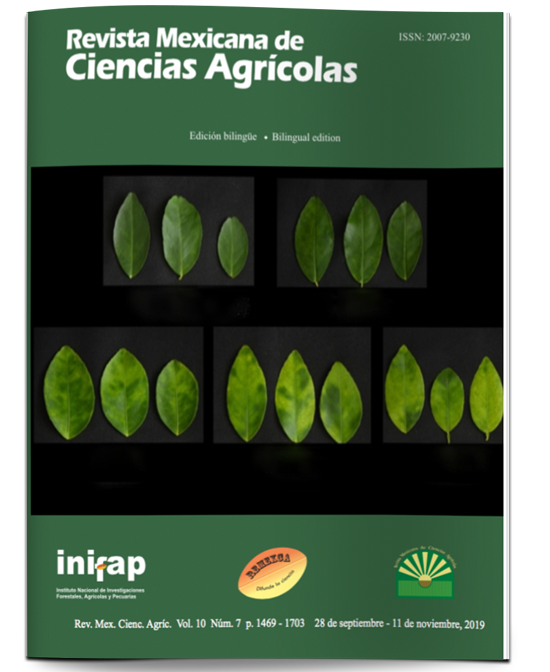Chia seed viability analysis protocol by tetrazolium test
DOI:
https://doi.org/10.29312/remexca.v10i7.1095Keywords:
Salvia hispanica L., concentrations, ISTA, tetrazolium salt, vigorAbstract
Salvia hispanica L. is an annual herbaceous plant, belonging to the Lamiaceae family, it stands out as the natural resource of plant origin with the highest content of fatty acids known so far. To obtain success in the production of seeds it is necessary to use lots of high quality, which can be evaluated, through the vigor of the same, at present, one of the main requirements for the evaluation of vigor refers to the obtaining of reliable results in a relatively short period of time. The tetrazolium test stands out for being fast and reliable. However, the methodology for the genus Salvia is not referenced within the standards of the International Seed Testing Association (ISTA), considering these facts, it becomes important to carry out the experiment for the development of a protocol that allows this analysis. The research was carried out in the Seed Laboratory of the Federal University of Pelotas, six batches of black chia seeds were used and four concentrations of tetrazolium salt (0.075%, 0.1%, 0.5% and 1%) were tested to evaluate the seed viability. The experimental delineation was in randomized blocks, submitted to the analysis of variance through the F test and subsequently the means compared to each other by the Tukey test, at 5% probability, for comparison of the means. The tetrazolium test conducted in the concentration of 0.075% is efficient to evaluate the viability of the seeds of S. hispanica L., as well as to differentiate lots with different physiological quality.
Downloads
Published
How to Cite
Issue
Section
License
The authors who publish in Revista Mexicana de Ciencias Agrícolas accept the following conditions:
In accordance with copyright laws, Revista Mexicana de Ciencias Agrícolas recognizes and respects the authors’ moral right and ownership of property rights which will be transferred to the journal for dissemination in open access. Invariably, all the authors have to sign a letter of transfer of property rights and of originality of the article to Instituto Nacional de Investigaciones Forestales, Agrícolas y Pecuarias (INIFAP) [National Institute of Forestry, Agricultural and Livestock Research]. The author(s) must pay a fee for the reception of articles before proceeding to editorial review.
All the texts published by Revista Mexicana de Ciencias Agrícolas —with no exception— are distributed under a Creative Commons License Attribution-NonCommercial 4.0 International (CC BY-NC 4.0), which allows third parties to use the publication as long as the work’s authorship and its first publication in this journal are mentioned.
The author(s) can enter into independent and additional contractual agreements for the nonexclusive distribution of the version of the article published in Revista Mexicana de Ciencias Agrícolas (for example include it into an institutional repository or publish it in a book) as long as it is clearly and explicitly indicated that the work was published for the first time in Revista Mexicana de Ciencias Agrícolas.
For all the above, the authors shall send the Letter-transfer of Property Rights for the first publication duly filled in and signed by the author(s). This form must be sent as a PDF file to: revista_atm@yahoo.com.mx; cienciasagricola@inifap.gob.mx; remexca2017@gmail.
This work is licensed under a Creative Commons Attribution-Noncommercial 4.0 International license.



